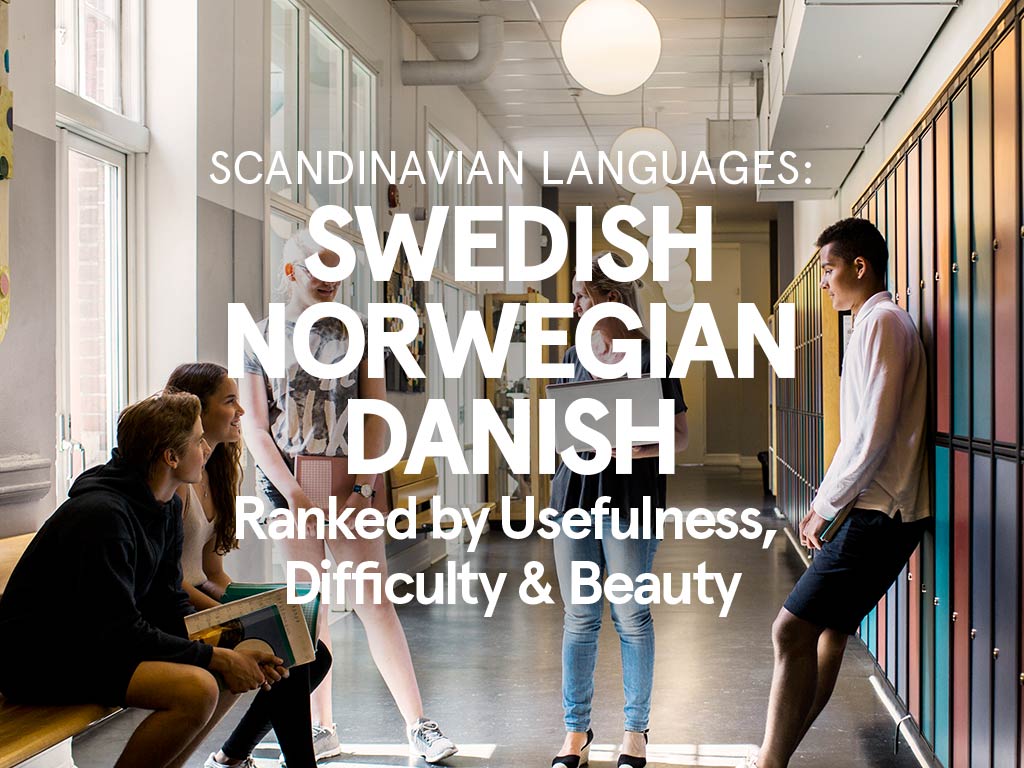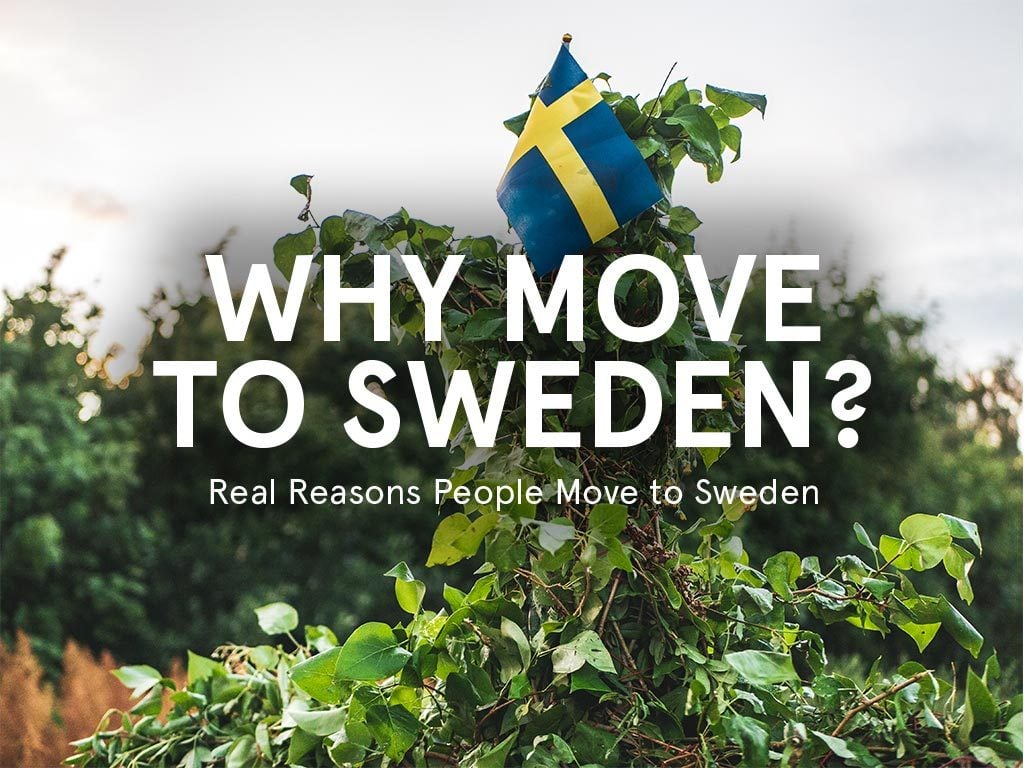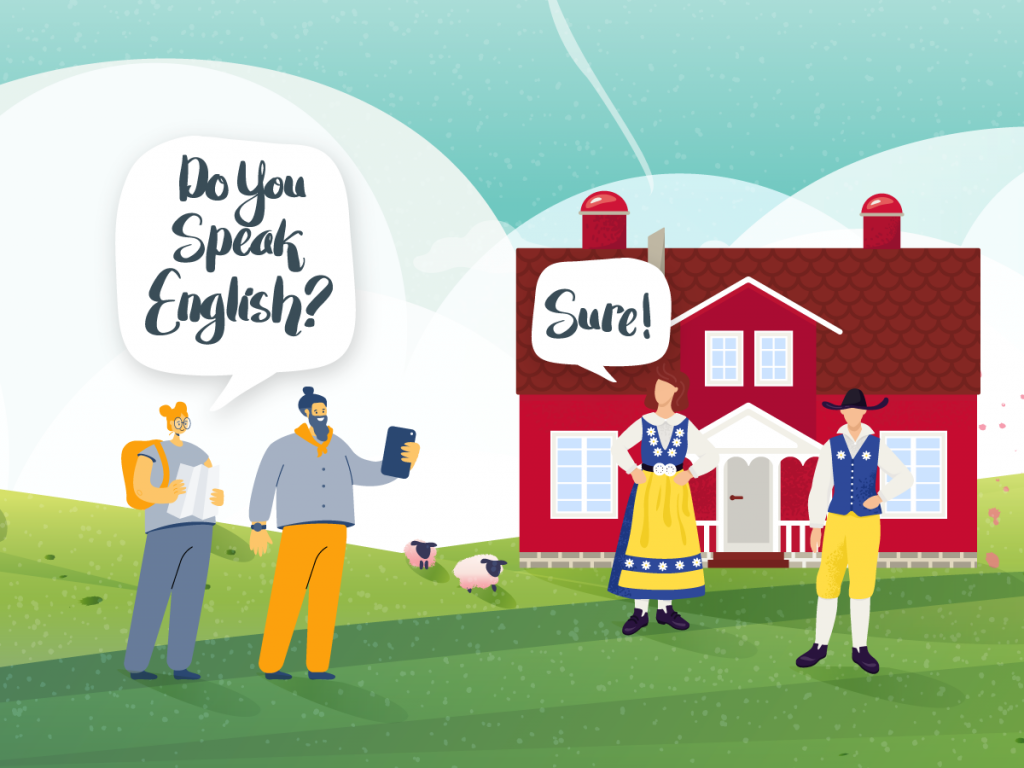I’ve come across many questions about languages in the Nordics and Scandinavia over the years, and just like the distinction between Nordic and Scandinavia isn’t always crystal clear, the languages in the region aren’t always easy to separate.
- How many Nordic or Scandinavian languages are there?
- The best and worse Scandinavian language to learn
- What is the most and least beautiful Scandinavian language?
- What is the easiest Nordic or Scandinavian language to learn?
- Are the Nordic/Scandinavian languages easy to learn?
- What language did the Vikings speak?
Let’s take a look at the basics about the languages spoken in the Nordics and Scandinavia, and see how they rank in various categories (most/least useful, most/least beauitful, and easiest to learn).
How many Nordic or Scandinavian languages are there?
There are three Scandinavian languages: Swedish, Danish, and Norwegian. While Icelandic and Faroese also stem from Scandinavia, they are not included in this group as they do not have as many European loan words and the grammar differs slightly.
They are, however, part of the five North Germanic languages: Swedish, Danish, Norwegian, Icelandic, and Faroese. These make up one of the three Germanic language groups, with West Germanic (English, German, Dutch, etc.) and East Germanic (no longer spoken) being the other two.
In the Nordic region as a whole, there are a total of six main languages spoken: Swedish, Danish, Norwegian, Finnish, Icelandic, Faroese. There are also several minority languages spoken, such as Sami, Greenlandic, Kven, Karelian, and Meänkieli.
Finnish, Sami, Kven, and Karelian are all part of the Uralic languages (of which Estonian, Livonian, and Hungarian are other notable members), which means they are not part of the same Indo-European language group as the other languages in the region.
The best and worse Scandinavian language to learn
If you are setting out to learn only one of the Nordic languages and haven’t decided which one, let’s take a look at which language would be of most use for you. Let’s assume that the most useful is the same as the one that is most widely understood.
To find the most widely understood, let’s look at the 2021 study by the Nordic Council where they asked over 2000 young people in the Nordic countries how well they understand the different Nordic languages.
The most useful Scandinavian language: Swedish
You might ask yourself, which Scandinavian language should I learn?
Swedish is the best language to learn if you’d like to be understood by the largest amount of people in the entire Nordics, as Swedish is especially well-understood across the region (with a spike in Finland where they teach Swedish in school).
“Which languages in addition to the main national language do you speak and/or write?”
Source: Nordic Council 2021
Swedish would be an especially good language if you want to move to Scandinavia for work, as there are 10 million people speaking native Swedish, the most in the Nordics. As such, you’ll likely find more jobs for expats and foreigners in Sweden than in the rest of the region.
So if working for Volvo, IKEA, H&M, Spotify, or Ericsson sounds like a good place to work it’s not a bad idea to get started with your Swedish lessons.
As a comparison, Danish, Norwegian, and Finnish all have around 5 million speakers each, while Icelandic has 300 000, Faroese 75 000, Greenlandic 55 000, and the Sami languages around 20-30 000 speakers.
The least useful Scandinavian language: Danish
Looking at the same Nordic council study from 2021, we can conclude that Danish is likely the least useful Scandinavian language to learn (unless you plan to live there), as it is the least understood out of the three in Scandinavia.
“It’s easy to understand…”
Source: Nordic Council 2021
This conclusion is also supported by Norden i Skole, naming Danish as the language most Nordic people have a hard time understanding. The biggest hurdle is the pronunciation, which differs quite a bit in Danish, compared to both Swedish and Norwegian.
That said, if you will primarily stay in the Danish realm (Denmark, Faroe Islands, Greenland) the Danish language will of course be spoken and understood perfectly fine, and will be an excellent choice to learn.
What is the most and least beautiful Scandinavian language?
A group of mixed Scandinavian students studying abroad (at a Scandinavian language school) was asked how they thought each Scandinavian language sounded, and overall they thought Swedish sounded best, followed by Norwegian, Finland-Swedish, and Danish.
“How do you think other Scandinavian languages sound?”
Source: Nordisk grannspråksförståelse i en skandinavisk skola utomlands, Hidayet Yalcin 2015
78.2% of respondents described Swedish as sounding “very nice”, 13% thought it sounded “average”, and finally 4.3% described Swedish as sounding “very ugly”. The Norwegian language sounded slightly more average to the respondents, with 60.8% saying it sounded “very nice”, 26.1% “average”, and 8.7% “very ugly”.
The same study would also suggest that Danish is the least beautiful Scandinavian language, with 73.9% of respondents describing the language as sounding “very ugly”, and only 4.3% of them describing it as sounding “very nice”.
What is the easiest Nordic or Scandinavian language to learn?
When the language-learning resource Babbel ranked the easiest languages to learn for English-speakers, the two Nordic languages Norwegian and Swedish ranked as the easiest and second easiest.
Needless to say, if you’re looking for a comparably easy language to learn, one of the Nordic languages will be a good choice, with Norwegian ultimately taking the prize as easiest Scandinavian language to learn for a native English-speaker.
Are the Nordic/Scandinavian languages easy to learn?
The Scandinavian languages (Swedish, Danish, and Norwegian) are comparably easy to learn for an English-speaker, as they are also part of the Germanic language group, and considered Category 1 languages according to FSI (meaning they would take around 23-24 weeks to reach fluency).
When it comes to Icelandic it will be a lot harder, as it is a Category IV language (meaning you may need up to 44 weeks to reach fluency).
The fact that Old English comes from a North Sea Germanic tribe that ultimately has its roots in Scandinavia means the links between English and the Scandinavian languages are a lot stronger and more similar than one may think.
What language did the Vikings speak?
The people described as Vikings—inhabitants of the Scandinavian region who set out to settle and pillage “new” lands—spoke the Old Norse languages, meaning either Old West Norse, Old East Norse, or Old Gutnish.
The exact language Vikings spoke depends on where they originated from:
- If they were from modern-day Norway or Iceland they would speak Old West Norse (a.k.a. Old Norwegian/Old Icelandic)
- If they were from modern-day Sweden or Denmark they would speak Old East Norse (a.k.a. Runic Swedish/Runic Danish)
- If they were from the island Gotland they would speak Old Gutnish
Findings suggest that there were plenty of people from outside of Scandinavia involved in Viking raids, meaning that there could be additional languages spoken within each specific (and unique) raiding party.
Sources:
https://portal.research.lu.se/portal/files/5905032/625654.pdf
http://www.let.rug.nl/gooskens/project/pdf/publ_Schueppert_et_al._2012c.pdf
https://nordeniskolen.org/sv/spraak-kultur/7-10-klass/de-nordiska-spraaken/om-danska/
https://studentblogsdu.wordpress.com/2018/10/30/whats-the-best-scandinavian-language-to-learn/
https://www.optilingo.com/blog/norwegian/which-scandinavian-language-is-easy-to-learn/
https://pub.norden.org/nord2021-004/
https://uu.diva-portal.org/smash/get/diva2:824233/FULLTEXT01.pdf
https://www.babbel.com/en/magazine/easiest-languages-for-english-speakers-to-learn
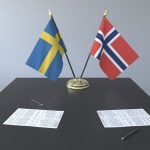 Should I Learn Swedish or Norwegian? (Answered with Data & Graphs)
Should I Learn Swedish or Norwegian? (Answered with Data & Graphs) How Nordic People Understand & Talk To Each Other (+ Graphs)
How Nordic People Understand & Talk To Each Other (+ Graphs)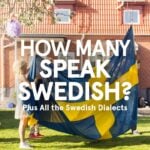 How Many People Speak Swedish and Its’ Different Dialects? (Stats)
How Many People Speak Swedish and Its’ Different Dialects? (Stats)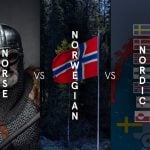 Norse vs. Norwegian vs. Nordic: Differences Explained
Norse vs. Norwegian vs. Nordic: Differences Explained

